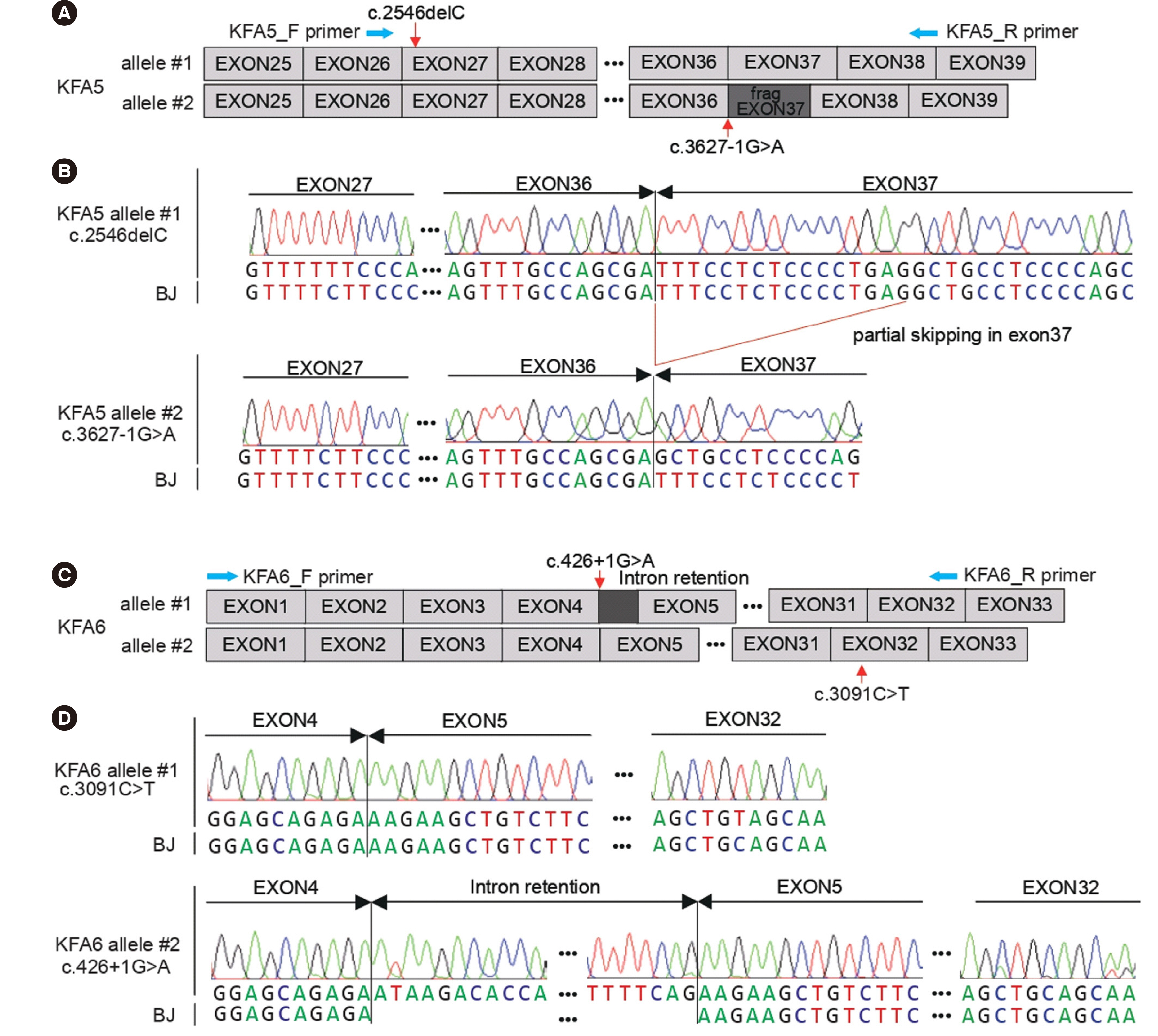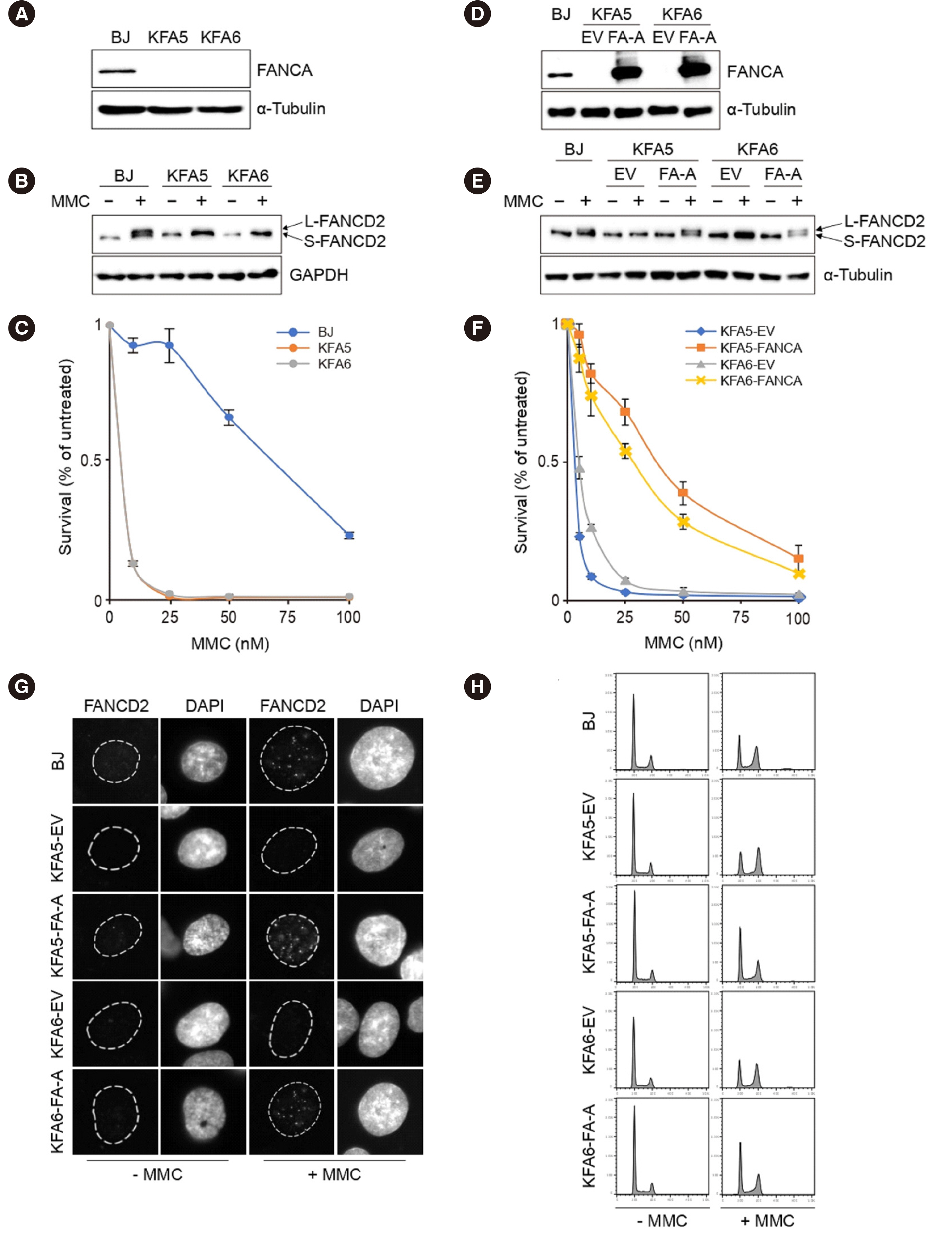Ann Lab Med.
2023 Jan;43(1):127-131. 10.3343/alm.2023.43.1.127.
Validation of Pathogenicity of Gene Variants in Fanconi Anemia Using Patient-derived Dermal Fibroblasts
- Affiliations
-
- 1Department of Biological Sciences & Research Institute of Women’s Health, College of Natural Sciences, Sookmyung Women’s University, Seoul, Korea
- 2Department of Laboratory Medicine, College of Medicine, The Catholic University of Korea, Seoul, Korea
- 3Catholic Genetic Laboratory Center, Seoul St. Mary’s Hospital, College of Medicine, The Catholic University of Korea, Seoul, Korea
- 4Department of Pediatrics, Seoul St. Mary’s Hospital, College of Medicine, The Catholic University of Korea, Seoul, Korea
- KMID: 2551619
- DOI: http://doi.org/10.3343/alm.2023.43.1.127
Figure
Reference
-
1. Auerbach AD. 2009; Fanconi anemia and its diagnosis. Mutat Res. 668:4–10. DOI: 10.1016/j.mrfmmm.2009.01.013. PMID: 19622403. PMCID: PMC2742943.
Article2. Niedernhofer LJ, Lalai AS, Hoeijmakers JH. 2005; Fanconi anemia (cross)linked to DNA repair. Cell. 123:1191–8. DOI: 10.1016/j.cell.2005.12.009. PMID: 16377561.
Article3. Knipscheer P, Räschle M, Smogorzewska A, Enoiu M, Ho TV, Schärer OD, et al. 2009; The Fanconi anemia pathway promotes replication-dependent DNA interstrand cross-link repair. Science. 326:1698–701. DOI: 10.1126/science.1182372. PMID: 19965384. PMCID: PMC2909596.
Article4. Ceccaldi R, Sarangi P, D'Andrea AD. 2016; The Fanconi anaemia pathway: new players and new functions. Nat Rev Mol Cell Biol. 17:337–49. DOI: 10.1038/nrm.2016.48. PMID: 27145721.
Article5. Oostra AB, Nieuwint AW, Joenje H, De Winter JP. 2012; Diagnosis of fanconi anemia: chromosomal breakage analysis. Anemia. 2012:238731. DOI: 10.1155/2012/238731. PMID: 22693659. PMCID: PMC3368163.
Article6. Matsushita N, Kitao H, Ishiai M, Nagashima N, Hirano S, Okawa K, et al. 2005; A FancD2-monoubiquitin fusion reveals hidden functions of Fanconi anemia core complex in DNA repair. Mol Cell. 19:841–7. DOI: 10.1016/j.molcel.2005.08.018. PMID: 16168378.
Article7. Lee HJ, Park S, Kang HJ, Jun JK, Lee JA, Lee DS, et al. 2012; A case report of Fanconi anemia diagnosed by genetic testing followed by prenatal diagnosis. Ann Lab Med. 32:380–4. DOI: 10.3343/alm.2012.32.5.380. PMID: 22950077. PMCID: PMC3427829.
Article8. The Rockefeller University. Fanconi Anemia Mutation Database. http://www.rockefeller.edu/fanconi/. Updated on August 2022.9. De Rocco D, Bottega R, Cappelli E, Cavani S, Criscuolo M, Nicchia E, et al. 2014; Molecular analysis of Fanconi anemia: the experience of the Bone Marrow Failure Study Group of the Italian Association of Pediatric Onco-Hematology. Haematologica. 99:1022. DOI: 10.3324/haematol.2014.104224. PMID: 24584348. PMCID: PMC4040906.
Article



